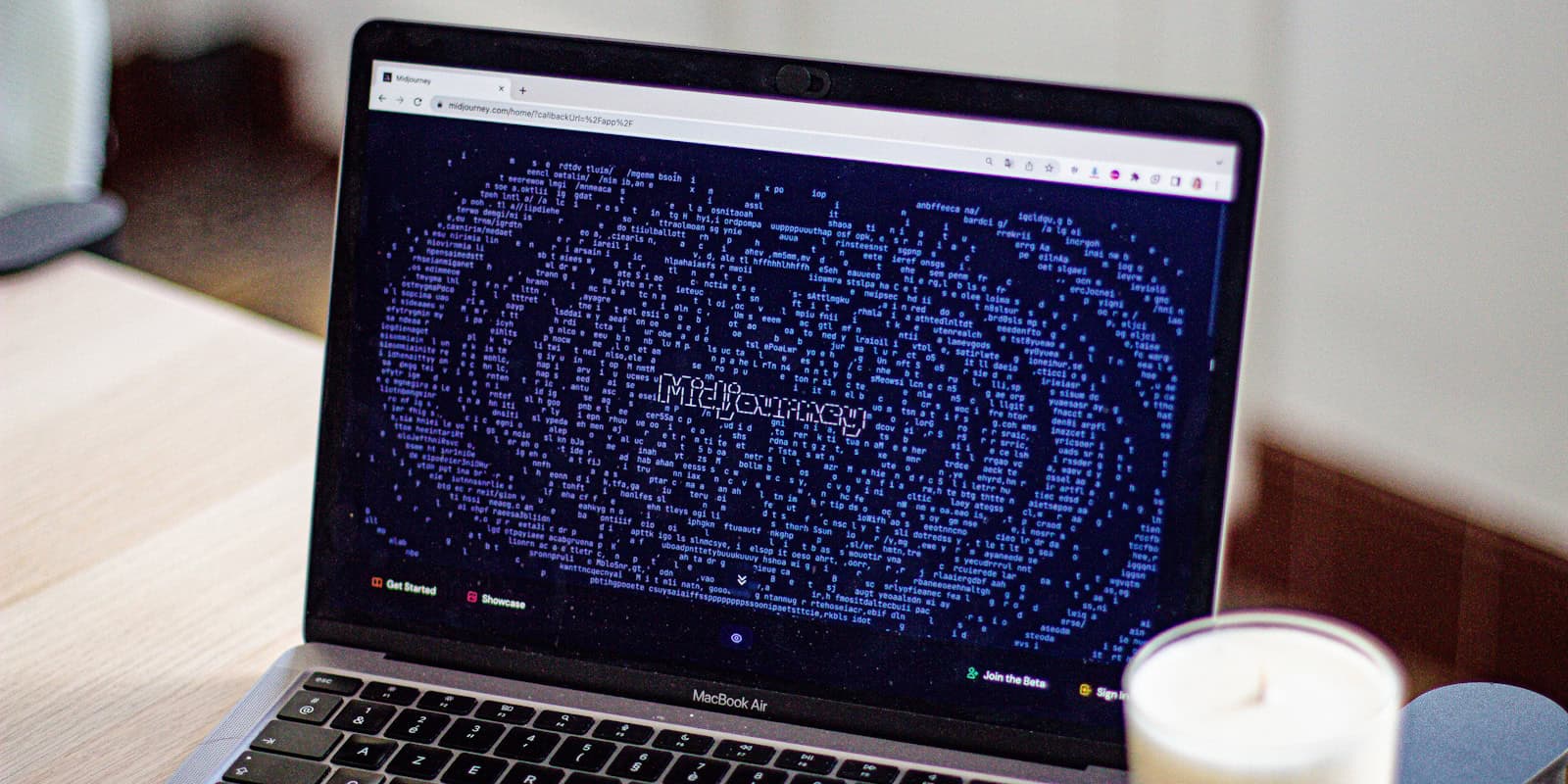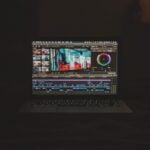AI image generators have transformed digital art creation, making it accessible to everyone from professionals to hobbyists. These tools convert text descriptions into stunning visuals, opening new possibilities for creative expression, marketing, and design. Users can produce unique artwork without traditional artistic skills or expensive software.
The best AI image generators in 2026 offer impressive capabilities ranging from photorealistic images to stylized illustrations, with options available for various skill levels and budgets. Some platforms specialize in artistic outputs while others excel at accurately rendering text within images. The technology continues to evolve rapidly, with improvements in quality, customization options, and user control appearing regularly in the market.
1. Midjourney
Midjourney has emerged as one of the leading AI image generators in 2026. This powerful tool creates stunning artistic images from text prompts with remarkable detail and creativity.
Many users consider Midjourney the best option for artistic results among AI art generators. Its ability to produce high-quality, imaginative visuals has made it particularly popular with digital artists and designers.
The platform uses a Discord-based interface that differs from other generators. While this may seem unusual at first, many users find the community aspect enhances their creative process.
Midjourney excels at creating impressive artistic interpretations rather than photorealistic images. Its stylized approach produces unique visuals with distinctive aesthetics that have become instantly recognizable.
Recent updates have significantly improved Midjourney’s capabilities. The system now offers better prompt understanding and more precise image generation compared to earlier versions.
While Midjourney doesn’t offer as many customization options as some competitors, it compensates with exceptional artistic quality. Its strength lies in creating beautiful, atmospheric images rather than technical precision.
Users particularly appreciate how Midjourney handles complex scenes and artistic styles. The system can effectively mimic various art movements and techniques based on text descriptions.
According to user feedback, Midjourney remains very solid overall compared to competitors. Its consistent quality and artistic flair keep it among the top choices for AI image generation.
The learning curve for Midjourney can be steeper than some alternatives. However, most users find the results worth the effort of mastering its prompt techniques.
2. DALL-E 3 by OpenAI
DALL-E 3 represents a significant advancement in AI image generation technology. Released by OpenAI, this powerful tool has quickly established itself as one of the most advanced image-generating models available today.
The system excels at understanding detailed instructions and nuanced requests. DALL-E 3 can translate complex ideas into remarkably accurate images, showing a level of comprehension that surpasses previous versions of the technology.
Users appreciate DALL-E 3’s ability to interpret prompts with precision. The AI can handle specific requirements about style, composition, and content elements while maintaining visual coherence throughout the generated image.
One notable strength is its integration capabilities. DALL-E 3 works seamlessly with existing workflows, making it practical for professional applications rather than just experimental use. Microsoft’s Image Creator tool is powered by DALL-E 3, providing the same high-quality results through a different interface.
In comparative testing, DALL-E 3 has demonstrated impressive performance. It was the only AI image generator in one review that successfully created a complex scene featuring a fire-breathing dragon flying over a castle with a fluffy sheep.
When deciding between popular options, many professionals consider DALL-E 3 particularly valuable for incorporating AI images into existing workflows. The system produces clean, coherent visuals that require minimal editing before use.
DALL-E 3 continues to evolve, with regular improvements to its understanding of prompts and image quality. The technology shows OpenAI’s commitment to developing increasingly sophisticated generative AI tools that respond accurately to human creative direction.
3. Adobe Firefly
Adobe Firefly stands out as a powerful AI image generator designed specifically for creative professionals. Launched by Adobe, this tool offers users the ability to create images, audio, and now video content using generative AI technology.
One of Firefly’s major advantages is its text-to-image feature, which transforms simple text prompts into detailed visuals. Users simply type what they want to see, and the AI produces corresponding images that match their descriptions.
The platform also offers an innovative image-to-image conversion tool that transforms existing photos into artistic renditions. This feature provides analysis and visualization tools that help users refine their creations.
Adobe designed Firefly with commercial use in mind. The company emphasizes that content created with their tool is “commercially safe,” making it appropriate for professional projects without copyright concerns.
The latest Image 3 model from Adobe Firefly delivers improved quality and more accurate results than previous versions. Users can access these features through Adobe’s intuitive interface, which integrates with other Adobe Creative Cloud applications.
Firefly’s AI art generator enables users to create detailed, stylistic images quickly. The technology understands various artistic styles and can replicate them based on text descriptions.
A significant benefit of Adobe Firefly is its seamless workflow from ideation to production. This integration helps creative professionals maintain consistency throughout their projects while saving valuable time.
Adobe offers Firefly with both free and premium options. The free version gives users access to basic features, while paid subscriptions unlock additional capabilities and higher usage limits.
4. Stable Diffusion
Stable Diffusion stands out as a powerful open-source AI image generator that has gained significant popularity among artists and developers. Unlike some competitors, it can be run locally on a user’s computer with sufficient GPU power, giving creators more control over the process.
The platform excels at creating detailed artwork, landscapes, and conceptual images from text prompts. Users can generate high-quality images by simply describing what they want to see, and the AI transforms these descriptions into visual content.
Stable Diffusion Online offers a free web-based version for those who don’t want to set up the software locally. This accessibility has helped build a large community around the tool.
One of Stable Diffusion’s biggest strengths is its flexibility. Advanced users can fine-tune parameters to achieve specific artistic styles or visual effects. This makes it particularly appealing to professionals who need precise control over their AI-generated images.
The open-source nature of Stable Diffusion has led to numerous modifications and improvements from the community. These include specialized versions optimized for particular types of imagery or artistic styles.
Many users appreciate that Stable Diffusion doesn’t require a subscription fee. While some web interfaces may charge for access, the core technology remains free to use for those willing to set it up themselves.
According to recent rankings, Stable Diffusion consistently appears among the top AI image generators for 2026. Its combination of power, flexibility, and cost-effectiveness makes it an appealing choice for many creators.
The platform continues to evolve with regular updates that improve image quality and add new features. Recent versions have significantly enhanced the tool’s ability to understand and interpret complex text prompts.
5. NightCafe Studio
NightCafe Creator is one of the most realistic AI image generators available today. The platform has gained popularity for its user-friendly interface and impressive image generation capabilities.
Users appreciate NightCafe for its versatility across different artistic styles. The platform excels particularly in creating fine art illustrations, with notable strength in watercolor imagery and graphics that replicate ink.
Many users have shared their positive experiences with NightCafe online. Some have described the results as among the best AI paintings they’ve seen, noting how the system intelligently blends and edits images.
The platform offers a comprehensive suite of editing tools. These features allow users to fine-tune their creations and achieve precisely the visual output they desire.
NightCafe has also developed specialized tools like their AI avatar creator. This feature helps users generate personalized profile pictures with various customization options.
For those looking to enhance their digital presence, NightCafe provides state-of-the-art technology for crafting profile pictures. The platform makes it easy to create professional, creative, or stylized portraits.
NightCafe Studio balances accessibility with powerful features. Beginners can quickly generate impressive images, while experienced users can leverage advanced settings for more precise control.
The platform continues to update its algorithms and features regularly. These improvements help maintain image quality and keep pace with rapidly evolving AI art technology.
6. Runway
Runway is a powerful AI platform that combines image generation with advanced video capabilities. The company describes itself as an applied research company shaping creativity through innovative AI tools.
Runway’s image generator stands out for its cinematic quality. The platform recently introduced “Frames,” which some reviewers consider the most cinematic AI image generator available today. This feature helps users create highly detailed, film-like visuals.
One of Runway’s key strengths is customization. Users can train their own AI image generator to create specific styles, characters, and more. This level of personalization makes it valuable for professional creative work.
The platform goes beyond basic image generation. Runway allows users to transform existing images into modified versions with their AI technology. This feature helps artists iterate on their work efficiently.
Runway positions itself differently from competitors. Rather than just offering tools, it markets itself as providing “tools for human imagination.” This philosophy guides its product development approach.
For professional creators in film, art, and entertainment industries, Runway offers specialized features. The platform’s focus on high-quality outputs makes it suitable for commercial projects.
When compared to other leading AI platforms, Runway is often highlighted for its video capabilities alongside image generation. This integration creates a more complete creative ecosystem.
The user interface is designed for both beginners and professionals. This accessibility makes it suitable for various skill levels while maintaining powerful functionality.
Runway continues to develop new features regularly. The company’s research-driven approach means users can expect ongoing improvements to image quality and capabilities.
7. ImageFX
ImageFX is Google’s AI image generator that has quickly gained popularity for its impressive capabilities. This tool allows users to transform text descriptions into detailed images through Google’s advanced AI technology.
Released as part of Google’s AI experiments, ImageFX has dethroned Microsoft Designer as the top AI image generator in recent tests. Its ability to create highly realistic images has impressed many users and reviewers.
The platform is accessible through Google’s Labs website, where users can easily input text prompts to generate images. The interface is designed to be user-friendly, making it accessible for beginners and experienced users alike.
ImageFX stands out for its remarkable realism. Some reviewers have described the results as scary realistic, putting it in competition with other high-end generators like Flux and Midjourney.
The tool encourages creativity by allowing users to explore “endless imagination” with their prompts. This makes it suitable for various applications, from creative projects to professional design work.
In recent rankings of AI image generators for 2026, ImageFX has secured a top-three position, coming after Midjourney and Stable Diffusion. This demonstrates its quality and reliability in the competitive AI image generation market.
One of the key advantages of ImageFX is its integration with Google’s ecosystem. This provides a familiar environment for users already accustomed to Google products.
The tool continues to evolve with regular updates from Google’s AI team. These improvements focus on enhancing image quality, prompt interpretation, and overall user experience.
8. Shutterstock AI Image Generator
Shutterstock’s AI Image Generator has become one of the most accessible tools for creating AI-generated images. It allows users to convert text prompts into creative visuals in just seconds, making it popular among both professionals and beginners.
The platform offers hundreds of creative AI art styles to choose from. This variety helps users find the perfect look for their projects without needing advanced technical skills.
Recently, Shutterstock upgraded their AI image generator by incorporating DALL·E 3 technology. This integration has significantly improved the quality and diversity of images the tool can produce from text descriptions.
The generator is designed with creators in mind. It helps by enhancing user prompts and offering over 100 artistic styles to choose from, making the creative process smoother and more intuitive.
Another advantage is the language support. The AI Image Generator supports more than 20 languages, making it accessible to creators worldwide regardless of their native language.
Shutterstock has positioned itself as a business-friendly option. Their enterprise solutions allow companies to unleash creative potential while maintaining brand consistency across multiple projects.
The platform emphasizes responsible AI use. Shutterstock trains their models ethically, which may appeal to users concerned about the ethics of AI-generated content.
For businesses seeking professional results, the Shutterstock AI Image Generator offers features specifically designed for commercial use. These tools help maintain quality standards across marketing materials.
The user-friendly interface makes it easy to get started without a steep learning curve. This accessibility has helped Shutterstock secure its place among the best AI image generators in 2026.
9. Meta AI
Meta AI offers a free image generation service that’s accessible through their website. Users can create AI-generated images without any cost, making it an attractive option for those exploring AI art creation.
The platform allows users to simply type what they want to imagine, and Meta AI generates the corresponding image. When you begin typing a prompt on the website, you’ll see an example image to guide your creative process.
Meta AI’s image generator is relatively new compared to some competitors. It’s built on Meta’s own AI technology, which powers various features across their family of apps and devices.
For users looking to experiment with AI imagery, the icebreaker feature provides helpful prompt suggestions. These can range from artistic concepts to practical visualizations.
The quality of Meta AI’s generated images has been mixed according to user feedback. Some users have compared it unfavorably to other options like DALL-E 3, suggesting there may be differences in output quality.
While Meta AI doesn’t currently rank among the top AI image generators in professional reviews, it offers the significant advantage of being completely free and requiring no special software installation.
The interface is straightforward and user-friendly, making it accessible even to those with limited technical expertise. Users simply need to visit the Meta AI website to start generating images.
10. DreamStudio
DreamStudio is an AI image generator created by Stability AI that uses the Stable Diffusion model to transform text prompts into images. It gives users extensive control over their creations, which is why it’s considered one of the best AI image generators for customization.
The platform offers a user-friendly interface that helps both beginners and experienced creators produce impressive visual content. Users can adjust various parameters like image dimensions, style strength, and generation steps to fine-tune their results.
DreamStudio provides 25 free credits to new users, allowing them to experiment with the tool before committing to a purchase. This makes it accessible for those who want to test its capabilities first.
Beyond basic image generation, DreamStudio has expanded its offerings to include Stable Assistant, a chatbot that helps generate and edit images. This assistant makes the creative process more interactive and intuitive.
The quality of images from DreamStudio is consistently high, with the ability to create detailed, realistic visuals across different styles and subjects. Users can choose from various AI models within the platform for different artistic approaches.
One of DreamStudio’s strengths is its growing community of users who share prompts, techniques, and feedback. This collaborative environment helps everyone improve their results and discover new creative possibilities.
The platform continues to evolve with regular updates that improve image quality and add new features. Stability AI regularly refines their models to address limitations and expand creative options.
Understanding AI Image Generators
AI image generators have transformed digital creation by using advanced algorithms to produce realistic images from text descriptions. These tools have become increasingly powerful, offering benefits for artists, designers, and casual users alike.
How AI Image Generators Work
AI image generators operate by using neural networks trained on millions of images and their descriptions. These models learn patterns and relationships between text and visuals. When a user enters a prompt, the AI predicts what pixels should appear where to create an appropriate image.
Most modern image generators use diffusion models. These start with random noise and gradually refine it into a coherent image that matches the text description. This process resembles removing noise step by step until a clear picture emerges.
Different generators have unique strengths. Midjourney excels at artistic results, while DALL-E 3 handles complex queries. Stable Diffusion offers greater customization, and Ideogram produces accurate text within images.
Advantages of Using AI for Image Generation
AI image generators offer numerous benefits for various users:
Speed and efficiency: Generate complex visuals in seconds rather than hours or days of manual work.
Accessibility: People without artistic training can create professional-looking images with simple text prompts.
Versatility: These tools can produce virtually any style or subject matter, from photorealistic landscapes to abstract concepts.
Iteration: Users can quickly generate multiple versions of an idea, refining prompts to achieve desired results.
Cost-effective: Many platforms offer free or affordable options compared to hiring professional artists or photographers.
The technology continues to improve rapidly, with each generation of AI producing more accurate, detailed, and creative images than before.
Ethical Considerations in AI Image Generation
AI image generators raise important ethical questions that users should understand before incorporating these tools into their workflows. These concerns range from legal issues around copyright to problems with bias and representation in generated images.
Copyright and Licensing Issues
AI image generators learn from millions of existing artworks, raising serious questions about copyright infringement. Many artists have not consented to having their work used as training material, creating potential copyright conflicts.
When using AI-generated images commercially, users face uncertain legal territory. The ownership status of these images remains ambiguous in many jurisdictions.
Some companies are developing more ethical approaches. Adobe Firefly is often cited as more responsible because it uses properly licensed training data and compensates creators.
Before using any AI-generated image, users should check the platform’s terms of service and understand the licensing implications. This can help avoid potential legal issues down the road.
AI Bias and Representation
AI image generators often perpetuate harmful stereotypes and biases present in their training data. These systems frequently reinforce racist and sexist stereotypes in their outputs without proper oversight.
The problem stems from imbalanced training datasets that overrepresent certain groups and perspectives. This leads to AI systems that produce stereotypical or inappropriate representations of people from marginalized communities.
These biases can have real-world impacts when AI-generated images are used in media, marketing, and other public-facing content. They shape how people view themselves and others.
Users should critically evaluate AI-generated images and consider the potential harm of reinforcing stereotypes. Choosing tools with diverse training data and built-in safeguards can help reduce unintentional biases in the final output.
How to Download ChatGPT on a Laptop
Visit openai.com/chat and click Download App (available for Windows and macOS). Install the app and log in to start using ChatGPT.
How to Use ChatGPT on an iPhone
Download the ChatGPT app from the App Store. Log in and start chatting. If you’re on iOS 18.2 or later, you can also use ChatGPT via Apple Intelligence and Siri (source: iGeeksBlog).
How to Use ChatGPT on a Computer
Simply go to chat.openai.com in your browser, log in, and start chatting. You can also install the desktop app for Windows or macOS for convenience.
How to Download ChatGPT on Android for Free
The ChatGPT app is free to download from the Google Play Store. Just search for “ChatGPT,” tap Install, and sign in after installation.
How to Use ChatGPT on a MacBook
Access ChatGPT via the macOS app or Safari/Chrome at chat.openai.com. You can also enable Apple Intelligence integration for Siri and writing tools.
How to Install ChatGPT on a Mac
Go to openai.com/chat, click Download for macOS, open the installer, and move the app to your Applications folder. Log in to start chatting.
Frequently Asked Questions
AI image generators have evolved rapidly, offering various features at different price points. Here are answers to common questions about these creative tools.
What are the top-rated AI image generators available online?
The most highly rated AI image generators in 2026 include Midjourney, DALL-E 3, and Stable Diffusion. Midjourney excels at artistic renderings with impressive detail, while DALL-E 3 is praised for its accuracy in understanding complex prompts.
Adobe Firefly has gained popularity among designers already familiar with Adobe products. Its integration with other Creative Cloud apps makes it particularly valuable for professional workflows.
Which AI image generator offers the highest quality output from text descriptions?
DALL-E 3 by OpenAI currently leads in understanding complex queries. It processes detailed descriptions with remarkable accuracy, producing images that closely match user intentions.
Midjourney is often preferred for artistic quality and aesthetic appeal. Its outputs tend to have a distinctive style that many users find visually pleasing.
NightCafe Studio balances quality with versatility, offering multiple AI models within its platform.
Are there any AI image generators that provide free access to their full feature set?
Few AI image generators offer their complete feature set for free. Most use tiered pricing models with limited free options.
DALL-E 3 can be accessed through Bing Image Creator with some limitations. It’s currently considered the most advanced free AI generation system for prompt understanding.
Stable Diffusion offers open-source versions that can be run locally for free, though this requires technical knowledge and suitable hardware.
How does Canva’s AI image generator compare to other industry-leading tools?
Canva’s AI image generator prioritizes simplicity and integration with its design platform. It’s less powerful than specialized tools like Midjourney or DALL-E 3 but offers seamless workflow integration.
The tool excels for basic design needs and quick image creation within Canva projects. Its strength lies in accessibility rather than cutting-edge AI capabilities.
Users praise its intuitive interface and direct integration with Canva’s extensive template library.
What advanced features do the leading AI image generators offer to enhance creative design?
Top AI image generators offer features like outpainting (extending images beyond original boundaries), inpainting (modifying specific sections), and style transfer capabilities.
The best tools provide extensive customization options such as aspect ratio control, resolution adjustments, and negative prompting (defining what to exclude).
Advanced tools like Midjourney and Adobe Firefly also offer reference image capabilities, allowing users to influence generated images based on uploaded examples.
Which AI image generators are known for their user-friendly interface and ease of use?
DALL-E 3 is recognized for its straightforward prompt system, making it accessible even to beginners. Users can simply type natural language descriptions to generate images.
NightCafe Studio offers an intuitive interface with guided creation processes and helpful presets. Its multi-model approach allows users to try different AI engines without learning new interfaces.
Adobe Firefly benefits from Adobe’s design expertise with a clean, professional interface that will feel familiar to Adobe product users.







